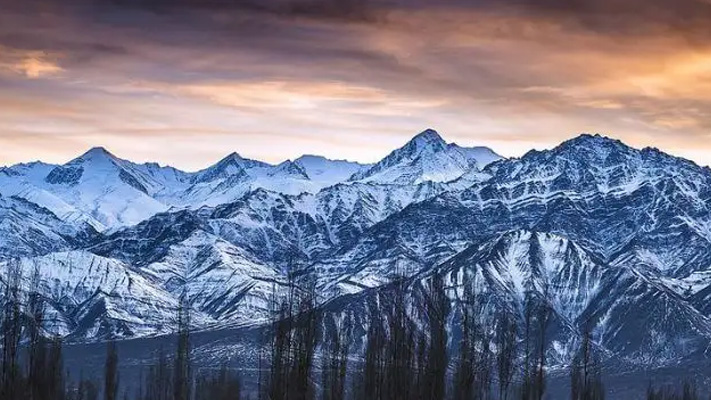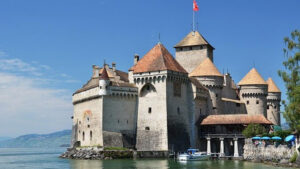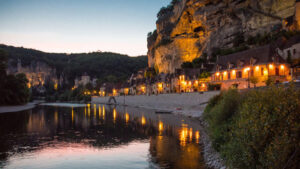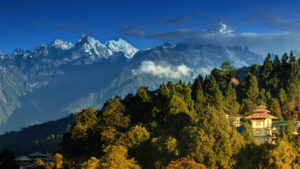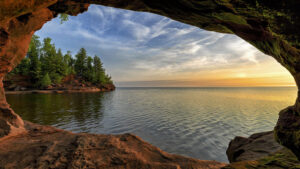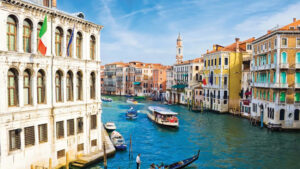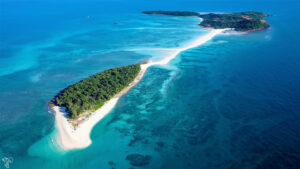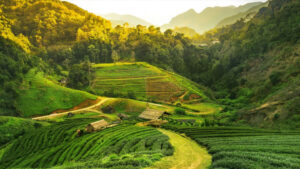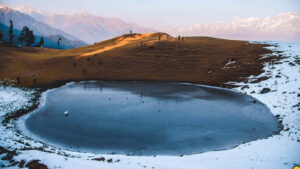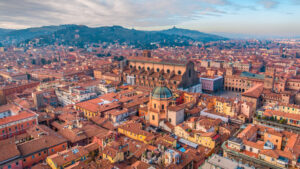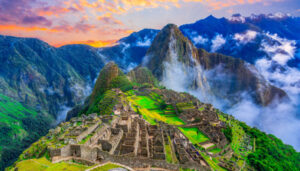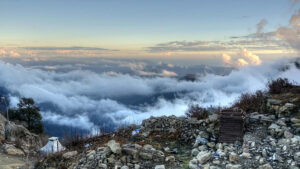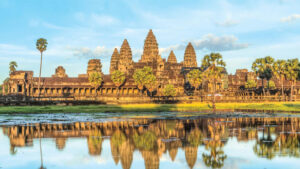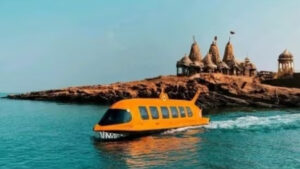STOK KANGRI, LADAKH – ENJOY MEMORABLE MOMENTS AT THE ROOFTOP OF THE WORLD

Stok Kangri is a prominent mountain peak located in the Ladakh region of northern India. It is part of the Stok Range, which lies to the south of Leh, the capital city of Ladakh. Stok Kangri is widely regarded as one of the most popular and accessible trekking peaks in the Indian Himalayas.

Stok Kangri and the Ladakh region offer several compelling reasons that make it a destination worth visiting. Here are some key factors:
- Stunning Natural Beauty: Ladakh is renowned for its breathtaking landscapes, and Stok Kangri is no exception. The trek to the summit provides awe-inspiring views of snow-capped peaks, glacial valleys, and picturesque landscapes. The region’s pristine beauty, including the vast expanse of the Himalayas, offers a truly immersive and unforgettable experience for nature enthusiasts and photographers.
- Accessibility: Compared to other high-altitude peaks in the Himalayas, Stok Kangri is relatively accessible to trekking enthusiasts. Its popularity stems from the fact that it is considered a “trekking peak,” meaning it can be climbed without advanced mountaineering skills or technical equipment. This accessibility makes it an attractive choice for adventure seekers looking to challenge themselves and experience the thrill of high-altitude trekking.
- Cultural Experience: Ladakh has a unique cultural heritage influenced by Tibetan Buddhism. Throughout the trek, trekkers get the opportunity to visit ancient monasteries, interact with local communities, and witness the traditional Ladakhi way of life. The region’s rich cultural tapestry, vibrant festivals, and warm hospitality of the locals add a fascinating dimension to the overall experience.
- Adventure and Challenge: Climbing Stok Kangri is a physically demanding and mentally challenging endeavor. The trek involves navigating glaciers, crossing steep slopes, and enduring high-altitude conditions. For adventure enthusiasts, it provides an opportunity to test their endurance, resilience, and personal limits. Conquering the summit of Stok Kangri can be an immensely rewarding and empowering achievement.
- Spiritual and Mindful Experience: The tranquil and serene surroundings of Stok Kangri and Ladakh create an ideal environment for introspection and spiritual reflection. The region’s peaceful atmosphere, coupled with the presence of ancient monasteries and meditation centers, allows trekkers to connect with their inner selves, seek solace, and experience a sense of tranquility amidst nature’s grandeur.
- Unique Wildlife and Flora: The Ladakh region boasts a diverse range of wildlife and flora adapted to the challenging Himalayan environment. During the trek, trekkers may encounter rare species such as the snow leopard, blue sheep (bharal), and Himalayan marmots. The opportunity to witness these unique and elusive creatures in their natural habitat adds an element of excitement and wonder to the trekking experience.
- Sustainable Tourism: In recent years, Ladakh has witnessed a growing emphasis on sustainable and responsible tourism practices. Local communities and organizations are actively working to preserve the region’s fragile ecosystem and traditional way of life. By visiting Ladakh and climbing Stok Kangri responsibly, travelers can contribute to the local economy while promoting environmentally friendly practices and cultural preservation.
Experiences for Tourists
When visiting Stok Kangri and the Ladakh region, there are several experiences that tourists can enjoy. Here are some of them:

- Trekking: The primary attraction of the region is trekking, and Stok Kangri offers an exhilarating trekking experience. Trekking enthusiasts can undertake the journey to the summit, traversing through stunning landscapes, crossing glaciers, and ascending challenging terrains. The trek provides breathtaking views and a sense of accomplishment upon reaching the summit.
- Visit Monasteries: Ladakh is known for its ancient monasteries, which are significant cultural and spiritual landmarks. Tourists can explore monasteries such as Hemis Monastery, Thiksey Monastery, and Diskit Monastery, among others. These monasteries not only showcase beautiful architecture but also offer a glimpse into the unique blend of Tibetan Buddhism and Ladakhi culture.
- Experience Local Festivals: Ladakh hosts vibrant and colorful festivals that provide an immersive cultural experience. The Hemis Festival, held at Hemis Monastery, is one of the most popular festivals, featuring traditional music, masked dances, and elaborate rituals. The Dosmoche Festival, Losar Festival, and Ladakh Festival are other significant celebrations that showcase the region’s cultural richness.
- Explore Leh: As the capital city of Ladakh, Leh offers various attractions for tourists. Visitors can explore the Leh Palace, a historic royal palace perched on a hill, and the Shanti Stupa, a Buddhist white-domed stupa offering panoramic views of the surrounding landscapes. Leh also has bustling markets where tourists can shop for traditional handicrafts, Tibetan artifacts, and local souvenirs.
- Experience Local Cuisine: Ladakhi cuisine offers a unique culinary experience. Tourists can savor traditional dishes such as momos (dumplings), thukpa (noodle soup), skyu (local pasta dish), and butter tea. Exploring local eateries and trying Ladakhi delicacies is a delightful way to immerse oneself in the local culture and flavors.
- Visit Pangong Lake: While not in the immediate vicinity of Stok Kangri, a trip to Pangong Lake is a popular side excursion for tourists in Ladakh. This stunning lake, situated at an altitude of about 4,350 meters (14,270 feet), is known for its crystal-clear blue waters that change hues throughout the day. The scenic beauty of Pangong Lake has made it a favorite destination for nature lovers and photographers.
- Wildlife Spotting: Ladakh is home to diverse wildlife species adapted to the harsh Himalayan environment. Travelers can embark on wildlife spotting excursions to spot rare and elusive species like the snow leopard, Tibetan wild ass (kiang), Himalayan marmots, and various bird species. Hemis National Park, located near Stok Kangri, is a renowned wildlife sanctuary in the region.
- Cultural Homestays: To gain a deeper insight into local life and experience Ladakhi hospitality, tourists can opt for cultural homestays. These provide an opportunity to stay with local families, participate in their daily activities, learn about their customs, and savor traditional meals. It is a chance to forge meaningful connections and gain a deeper understanding of Ladakhi culture.
Top Attractions and Must See Places
When visiting Stok Kangri and the Ladakh region, there are several top attractions and must-see places to explore. Here are some of them:

- Leh Palace: Located in Leh, the Leh Palace is a historic royal palace that offers panoramic views of the city and the surrounding mountains. It is an architectural marvel and provides insights into the region’s rich history and culture.
- Hemis Monastery: Situated about 45 kilometers southeast of Leh, Hemis Monastery is one of the largest and wealthiest monasteries in Ladakh. It is known for its stunning architecture, vibrant festivals like the Hemis Festival, and a museum that houses a remarkable collection of ancient artifacts.
- Pangong Lake: Although located a bit away from Stok Kangri, Pangong Lake is a must-visit destination. Its mesmerizing blue waters set against the backdrop of rugged mountains create a surreal and captivating landscape. The lake gained popularity after being featured in the movie “3 Idiots.”
- Thiksey Monastery: Situated around 20 kilometers southeast of Leh, Thiksey Monastery is an impressive complex that resembles the Potala Palace in Lhasa, Tibet. It houses numerous temples, including a 49-foot-high statue of Maitreya (the future Buddha), and offers breathtaking views of the Indus Valley.
- Diskit Monastery: Located in the Nubra Valley, Diskit Monastery is the oldest and largest monastery in the region. It is known for its gigantic statue of Maitreya Buddha and offers panoramic views of the valley and the sand dunes.
- Shanti Stupa: Perched on a hilltop in Leh, the Shanti Stupa is a white-domed Buddhist stupa that was built to promote peace and harmony. It provides a serene atmosphere and offers stunning views of Leh and the surrounding mountains.
- Nubra Valley: A trip to the Nubra Valley is highly recommended. It is known for its picturesque landscapes, sand dunes, and the famous double-humped Bactrian camels. The valley also offers the opportunity to visit the Hunder and Sumur monasteries.
- Lamayuru Monastery: Located on the Leh-Srinagar highway, Lamayuru Monastery is one of the oldest monasteries in Ladakh, dating back to the 10th century. It is known for its unique architecture, beautiful wall paintings, and the annual masked dance festival.
- Alchi Monastery: Situated on the banks of the Indus River, Alchi Monastery is known for its ancient and well-preserved wall paintings that date back to the 12th century. It is an important cultural and historical site in Ladakh.
- Magnetic Hill: Located about 30 kilometers from Leh, the Magnetic Hill is a unique natural phenomenon where vehicles appear to move uphill on their own due to an optical illusion. It is a popular attraction for visitors passing through the area.
Best Time to Visit
The best time to visit Stok Kangri and the Ladakh region is during the summer months, from June to September. This period offers the most favorable weather and optimal conditions for trekking and exploring the area.
- Summer: This is the peak tourist season in Ladakh. During these months, the weather is generally pleasant, with mild to warm temperatures during the day and cool temperatures at night. The average daytime temperature ranges from 20°C to 30°C (68°F to 86°F), making it comfortable for outdoor activities. The snow at higher altitudes has melted, allowing trekkers to navigate the trails more easily. The skies are usually clear, providing excellent visibility for panoramic views of the mountains and landscapes.

- Winter: Winter in Ladakh is extremely cold, and most areas, including Stok Kangri, are inaccessible due to heavy snowfall and freezing temperatures. The temperatures can drop well below freezing, and many roads and passes are closed. However, if you are interested in winter sports like skiing or want to experience the unique winter landscape, you can plan a visit to the popular winter destination of Nubra Valley or attend the annual Ice Hockey Championship in Leh.
It’s important to note that Ladakh’s high altitude requires proper acclimatization. Spending a few days in Leh before attempting any strenuous activities like trekking is advisable. Regardless of the time of year you choose to visit, it’s essential to pack appropriate clothing to handle the fluctuating temperatures and the high-altitude conditions.
How to Reach
Reaching Stok Kangri and the Ladakh region typically involves traveling to Leh, the capital city of Ladakh. Leh has good connectivity with major cities in India by air and road. Here are the primary modes of transportation to reach Ladakh:
- By Air: The easiest and fastest way to reach Leh is by air. Kushok Bakula Rimpochee Airport in Leh is well-connected to major cities like Delhi, Mumbai, Kolkata, and Srinagar. Several airlines operate regular flights to Leh, especially during the peak tourist season. The flight duration from Delhi to Leh is approximately 1.5 to 2 hours.
- By Road:
a) By Bus: Regular bus services operate from cities like Srinagar and Manali to Leh. The Srinagar-Leh highway (NH1) and the Manali-Leh highway (NH3) are the two main routes. The Srinagar-Leh highway remains open from around May to November, while the Manali-Leh highway opens from around June to September, depending on weather and road conditions. The bus journey from Srinagar or Manali to Leh takes approximately 2 days with overnight stops.
b) By Car or Motorcycle: Many adventure enthusiasts prefer traveling to Ladakh by car or motorcycle. You can rent a vehicle in cities like Delhi, Srinagar, or Manali and undertake the scenic road journey to Leh. It’s essential to be well-prepared, carry extra fuel, and have a reliable mode of transportation for challenging terrain and high-altitude conditions.

- Inner Line Permits: It’s important to note that traveling to Ladakh requires obtaining Inner Line Permits for Indian nationals and Protected Area Permits for foreign nationals. These permits can be obtained online or through authorized travel agents. They are necessary to visit certain restricted areas in Ladakh, including Pangong Lake, Nubra Valley, and Tso Moriri.
Once you reach Leh, you can hire local taxis or join organized tours for transportation to Stok Village, the starting point for the Stok Kangri trek. Stok Village is about 15 kilometers southeast of Leh and can be reached by road in approximately 30 minutes.



